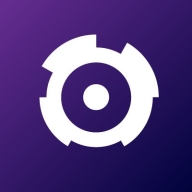

Statseeker and OP5 Monitor compete in the network monitoring solutions category, targeting IT infrastructure management needs. Statseeker appears to have the upper hand in speed and scalability for large-scale networks, while OP5 Monitor offers stronger integration options and feature sets for complex customization.
Features: Statseeker provides real-time monitoring, exceptional scalability, and rapid data aggregation, making it ideal for extensive networks. OP5 Monitor offers extensive integration options, comprehensive IT system monitoring, and customizable insights.
Room for Improvement: Statseeker could improve by adding more customizable monitoring features, broader integration capabilities, and enhanced data visualization. OP5 Monitor may benefit from streamlining its user interface, simplifying initial configurations, and improving deployment efficiency.
Ease of Deployment and Customer Service: Statseeker has a straightforward deployment process and reliable support suitable for quick implementation. OP5 Monitor's flexibility in deployment and accommodating customer support enhances long-term satisfaction despite initial complexity.
Pricing and ROI: Statseeker offers a favorable setup cost and swift ROI, catering to budget-focused businesses. OP5 Monitor requires a more considerable investment but potentially yields higher ROI due to its comprehensive features, presenting value for those prioritizing robust functionality.
| Product | Market Share (%) |
|---|---|
| OP5 Monitor | 0.7% |
| Statseeker | 0.3% |
| Other | 99.0% |

| Company Size | Count |
|---|---|
| Small Business | 2 |
| Large Enterprise | 5 |
| Company Size | Count |
|---|---|
| Small Business | 2 |
| Midsize Enterprise | 6 |
| Large Enterprise | 34 |
OP5 Monitor - The Complete Monitoring Solution
OP5 Monitor is a flexible and highly scalable monitoring solution for all sizes of environments. Use just one product to monitor your IT environment regardless of location, whether on-premise, in dynamic environments, public cloud or a hybrid of these.
Digital transformation adds extra layers and complexity to the IT estate by creating a hybrid IT environment of both static and dynamic environments, that can be difficult to monitor efficiently. ITRS OP5 Monitor gives enterprises full visibility over their entire IT estate through a single pane of glass, allowing them to consolidate monitoring tools and cut down costs.
We monitor all Network Monitoring Software reviews to prevent fraudulent reviews and keep review quality high. We do not post reviews by company employees or direct competitors. We validate each review for authenticity via cross-reference with LinkedIn, and personal follow-up with the reviewer when necessary.